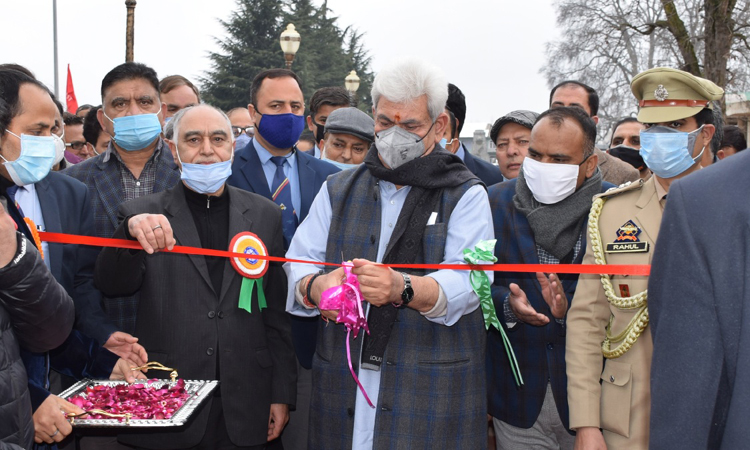 Early Times Report Early Times Report
SRINAGAR, Feb 28: Lieutenant Governor Manoj Sinha on Sunday laid emphasis on connecting farmers with Agricultural Experts, University Academics, Agripreneurs and Industry people to access reliable, updated and relevant information so that their risks and uncertainties are reduced.
Sinha, who is the Chancellor of SKUAST-Kashmir, on Sunday made these remarks after inaugurating a 2-day long sixth Technology Exhibition cum Seed Sale Mela on the theme "Shaping the Future Farming for Better Returns" here at Shalimar campus of the University.
The Lt Governor inspected around 200 stalls showcasing a variety of products and technologies developed in the field of Agriculture, Horticulture, Animal Husbandry, Fisheries, Agro-Forestry, Agri-Engineering, and other related fields.
He also took stock of the stalls displaying and highlighting various farmers' welfare schemes and programs, besides the exhibition demonstrated by the other stakeholders dealing with agriculture inputs, farm machinery, and organic products installed during the event.
The Lt Governor observed that such exhibitions play an important role in offering an exceptional opportunity to farmers to access reliable, updated, and relevant information, thus help in reducing farmers' risk and uncertainty.
The Lt Governor also planted a Tulip sapling in the campus of the University on the occasion.
During the Mela, stalls were installed by farmers, stakeholders, various Faculties, Divisions, Research stations, and KVKs showcasing different products and technologies developed by SKUAST in the field of agriculture and allied sectors.
Fruit plant seedlings, vegetable seeds, flower seedlings, poultry birds, milk and milk products, livestock feeds, vermicompost, fish, value-added vegetable and fruit products are being put on sale for the visitors.
High-density plantation is the special focus of this year's event. Besides, the new strides in agriculture through the use of Artificial Intelligence and other new-age technologies were also on display.
Literature on Scientific Agriculture, Horticulture, Sericulture, fish farming, and Livestock farming was also distributed among the visiting farmers and entrepreneurs. A farmer-scientist interaction program was also arranged for the visiting farmers. |
